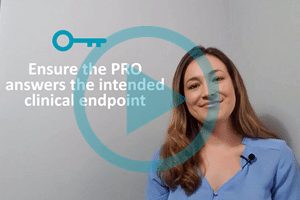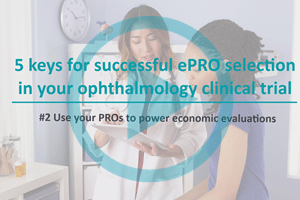Although clinical research stakeholders strive to be patient-centered in their approach, dependence on clinical parameters alone is not enough. As clinical investigations may not necessarily correlate with the patient’s own experience of their disease, PROs help complete this picture in the clinical research settings.
The FDA recommends for the PROs to be specifically targeted and designed for patients with patients:
“Because the purpose of a PRO measure is to capture the patient’s experience, an instrument will not be a credible measure without evidence of its usefulness from the target population of patients. Sponsors should provide documented evidence of patient input during instrument development and of the instrument’s performance in the specific application in which it is used (i.e., population, condition).”
If there can be direct patient engagement from the outset, including patient input into the selection of domains to explore, this will ensure that studies capture outcomes that matter to the patients. In this way, a clinical study is likely to be more successful and have better patient adherence when the protocol is designed in a way to improve patient ease and understanding.
In ophthalmology trials, interviewing patients on their perception of symptoms and the impact it has in their daily life, can help drive ePRO selection towards the ones that will capture the data that is of most value to the patients.
Celeste Sage, Clinical Project Manager @Kayentis
Estelle Haenel, Medical Director @Kayentis
Discover more on successful ePRO selection in your ophthalmology clinical trial:
Follow us on LinkedIn to stay up-to-date on our latest videos:











